Troy Ancient City was an ancient city best known as the setting for the Greek myth of the Trojan War. It was located at Hisarlik in present-day Turkey, 30 kilometres (19 mi) south-west of Çanakkale and about 6 kilometres (4 mi) miles east of the Aegean Sea.
In Ancient Greek literature, Troy is portrayed as a powerful kingdom of the Heroic Age, a mythic era when monsters roamed the earth and gods interacted directly with humans. The city was said to have ruled the Troad until the Trojan War led to its complete destruction at the hands of the Greeks. The story of its destruction was one of the cornerstones of Greek mythology and literature, featuring prominently in the Iliad and the Odyssey, and referred to in numerous other poems and plays. Its legacy played a large role in Greek society, with many prominent families claiming descent from those who had fought there. In the Archaic era, a new city was built at the site where legendary Troy was believed to have stood. In the Classical era, this city became a tourist destination, where visitors would leave offerings to the legendary heroes.
Archaeological excavation of the site began in 1871. Heinrich Schliemann and Frank Calvert excavated the site of the classical era city, under whose ruins they found the remains of numerous earlier settlements. Several of these layers resemble literary depictions of Troy, leading some scholars to conclude that there is a kernel of truth underlying the legends. Subsequent excavations by others have added to the modern understanding of the site, though the exact relationship between myth and reality remains unclear and there is no definitive evidence for a Greek attack on the city.
The archaeological site of Troy Ancient Cityconsists of nine major layers, the earliest dating from the Early Bronze Age, the latest from the Byzantine era. Each of these layers has sublayers for a total of 46 strata. The mythic city is typically identified with one of the Late Bronze Age layers, such as Troy VI, Troy VIIa, or Troy VIIb. The archaeological site is open to the public as a tourist destination, and was added to the UNESCO World Heritage list in 1998.
In Classical Greek, the city was referred to as both Troy Ancient City (Τροία) and Ilion or Ilios. Metrical evidence from the Iliad and the Odyssey suggests that the latter was originally pronounced Wilios. These names seem to date back to the Bronze Age, as suggested by Hittite records which refer to a city in northwest Anatolia, Truwisa which is generally identified with the site of Hisarlik. In Greek myth, these names were held to originate from the names of the kingdom’s founders, Tros and his son Ilus.
The main literary work set at Troy Ancient City is the Iliad, an Archaic-era epic poem which tells the story of the final year of the Trojan War. The Iliad portrays Troy Ancient City as the capital of a rich and powerful kingdom. In the poem, the city appears to be a major regional power capable of summoning numerous allies to defend it. The city itself is described as sitting on a steep hill, protected by enormous sloping stone walls, rectangular towers, and massive gates whose wooden doors can be bolted shut. The city’s streets are broad and well-planned. At the top of the hill is the Temple of Athena as well as King Priam’s palace, an enormous structure with numerous rooms around an inner courtyard.
In the Iliad, the Achaeans set up their camp near the mouth of the Scamander river, where they beached their ships. The city itself stood on a hill across the plain of Scamander, where much of the fighting takes place.
Besides the Iliad, there are references to Troy Ancient City in the other major work attributed to Homer, the Odyssey, as well as in other ancient Greek literature (such as Aeschylus’s Oresteia). The Homeric legend of Troy Ancient City was elaborated by the Roman poet Virgil in his Aeneid. The fall of Troy Ancient City with the story of the Trojan Horse and the sacrifice of Polyxena, Priam’s youngest daughter, is the subject of a later Greek epic by Quintus Smyrnaeus (“Quintus of Smyrna”).
The Greeks and Romans took for a fact the historicity of the Trojan War and the identity of Homeric Troy with a site in Anatolia on a peninsula called the Troad (Biga Peninsula). Alexander the Great, for example, visited the site in 334 BC and there made sacrifices at tombs associated with the Homeric heroes Achilles and Patroclus.
The archaeological site of Troy consists of the hill of Hisarlik and the fields below it to the south. The hill is a tell, composed of strata containing the remains left behind by more than three millennia of human occupation. The primary divisions among layers are designated with Roman numerals, Troy I representing the oldest layer and Troy IX representing the most recent. Sublayers are distinguished with lowercase letters (e.g. VIIa and VIIb) and further subdivisions with numbers (e.g. VIIb1 and VIIb2). An additional major layer known as Troy 0 predates the layers which were initially given Roman numeral designations.
The layers have been given relative dates by comparing artifacts found in them to those found at other sites. However, precise absolute dates are not always possible due to limitations in the accuracy of C14 dating.
The Turkish government created the Historical National Park at Troy on September 30, 1996. It contains 136 square kilometres (53 sq mi) to include Troy and its vicinity, centered on Troy. The purpose of the park is to protect the historical sites and monuments within it, as well as the environment of the region. In 1998 the park was accepted as a UNESCO World Heritage Site.
In 2015 a Term Development Revision Plan was applied to the park. Its intent was to develop the park into a major tourist site. Plans included marketing research to determine the features most of interest to the public, the training of park personnel in tourism management, and the construction of campsites and facilities for those making day trips. These latter were concentrated in the village of Tevfikiye, which shares Troy Ridge with Troy. Public access to the ancient site is along the road from the vicinity of the museum in Tevfikiye to the east side of Hisarlik. Some parking is available. Typically visitors come by bus, which disembarks its passengers into a large plaza ornamented with flowers and trees and some objects from the excavation. In its square is a large wooden horse monument, with a ladder and internal chambers for use of the public. Bordering the square is the gate to the site. The public passes through turnstiles. Admission is usually not free. Within the site, the visitors tour the features on dirt roads or for access to more precipitous features on railed boardwalks. There are many overlooks with multilingual boards explaining the feature. Most are outdoors, but a permanent canopy covers the site of an early megaron and wall.
The archaeological site of Troy was added to the UNESCO World Heritage list in 1998 in recognition of its historical, cultural, and scientific significance.

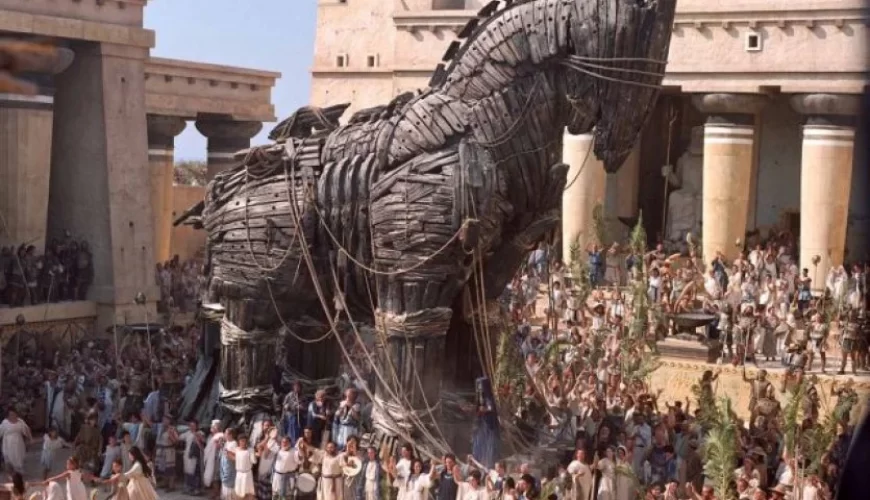
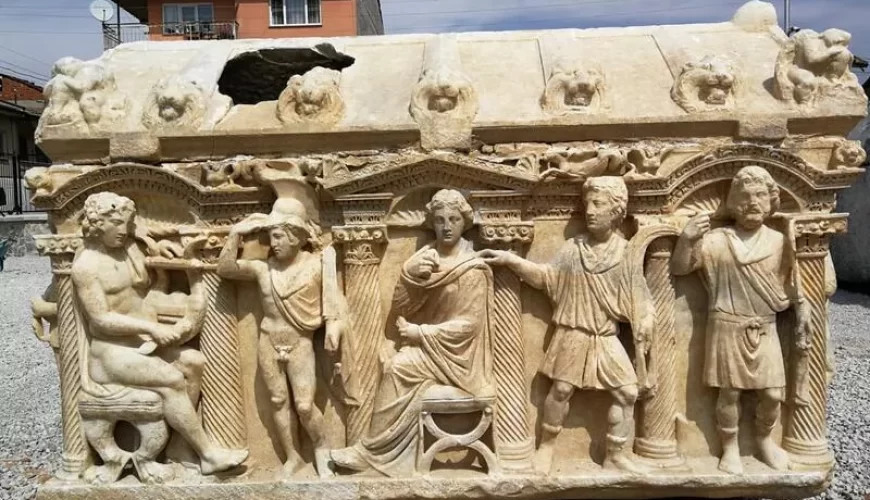
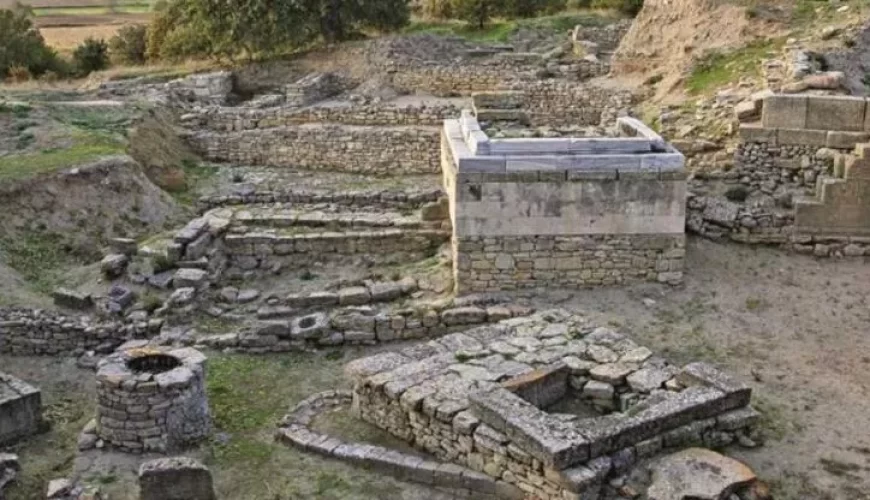
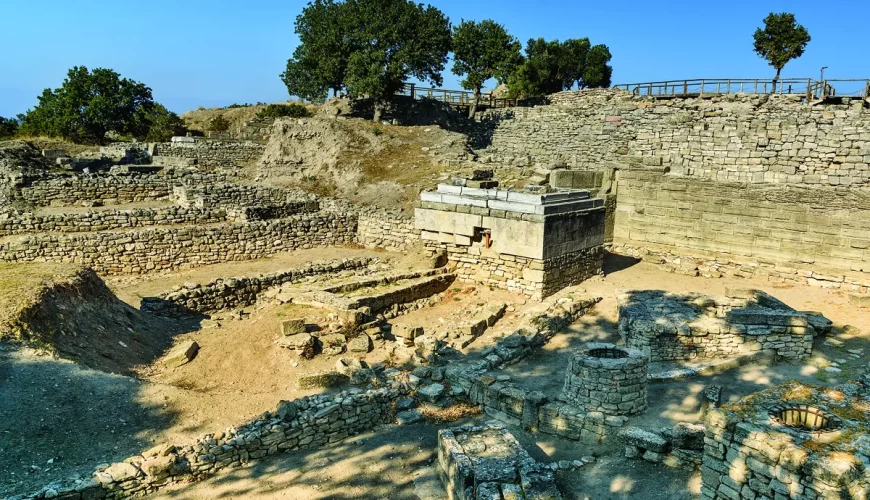
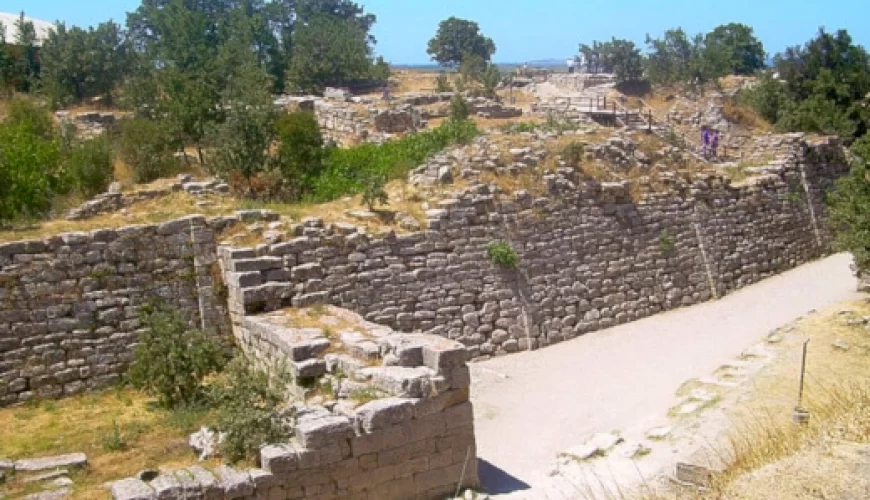
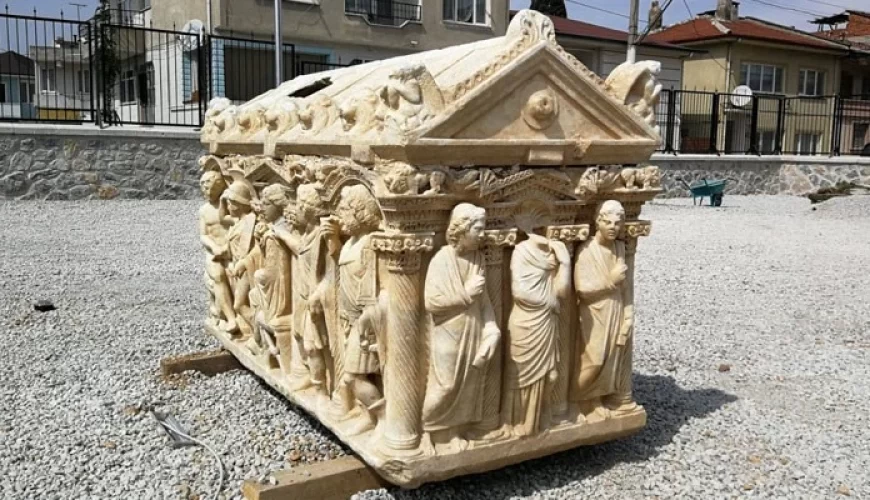
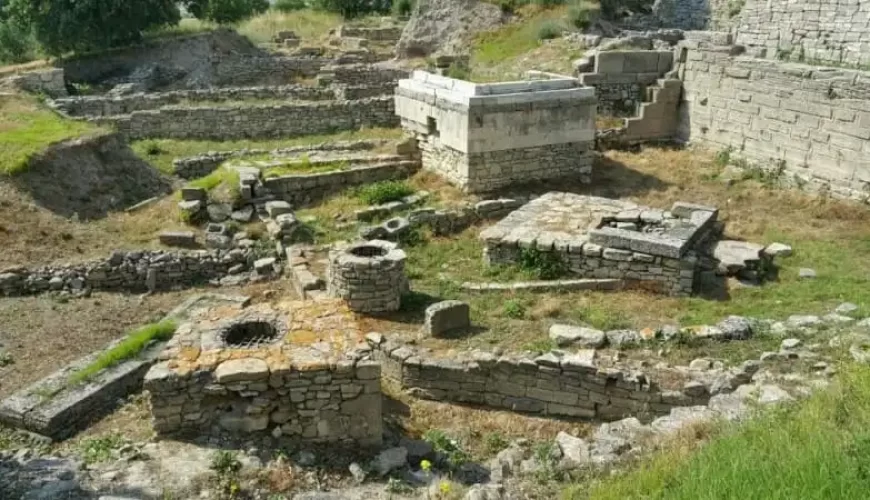
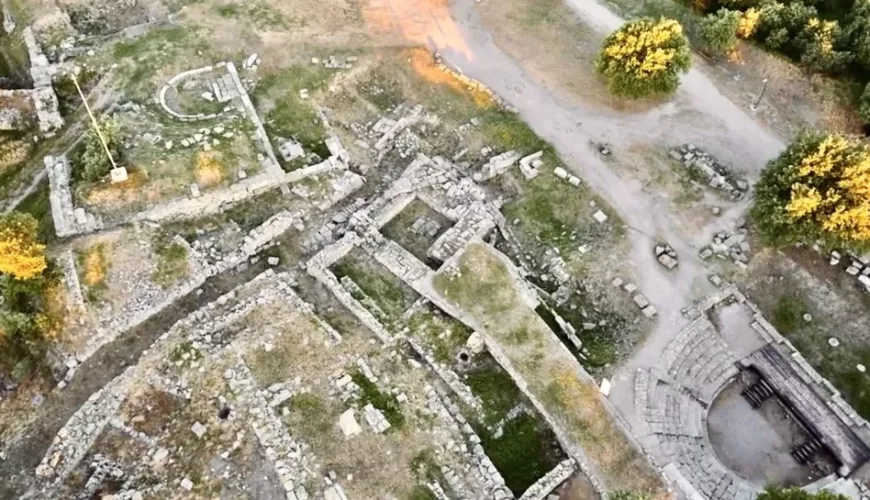
Comment (0)